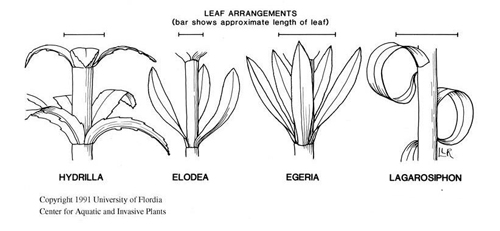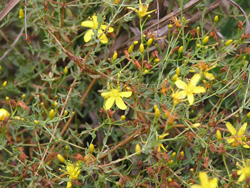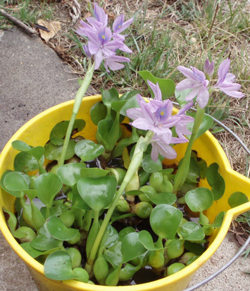Weed Spotter newsletter issue 17 — 17 May 2016
Weed Spotter program update
Changes to the structure of the Victorian Governments departments has resulted in the Weed Spotter program transferring to Agriculture Victoria, part of the Department of Economic Development, Jobs, Transport and Resources (DEDJTR).
What does this mean for Weed Spotters?
- Communication material for the Weed Spotter program will be co- branded with Agriculture Victoria and DEDJTR.
- The Weed Spotter email for reporting State prohibited weeds has changed to weed.spotters@agriculture.vic.gov.au.
- The Customer Service Centre for reporting State prohibited weeds remains unchanged 136 186.
Remember when making a report to provide as much detail as possible to ensure that your report can be followed up quickly. If you provide your contact details, you will be directly informed of the outcome of your report.
Tell us:
- your name
- your preferred contact phone number
- your email address
- the name and a brief description of the suspected State prohibited weed you wish to report
- the number of plants you have found or spotted
- location where the plants were found or spotted with specific references to streets or landmarks
- images.
Other than that, it is business as usual for the Weed Spotter program. We continue to ask you to be observant and look out for State prohibited weeds during your day-to-day activities. The information gathered by Weed Spotters is vital for early detection, rapid response and possible eradications of new incursions before they spread and become established.
Watch out for lagarosiphon

An alert member of the public recently spotted and reported what he suspected to be lagarosiphon in a weir at Cowwarr in East Gippsland.
Lagarosiphon (Lagarosiphon major) is an aquatic State prohibited weed that originates from southern Africa and has become a major weed in New Zealand and parts of Europe. The reporter had read about lagarosiphon in a brochure so he immediately made a report at the Bairnsdale office after spotting the suspected plant.
Agriculture officers Darryl Clune and Kelly Pardew promptly followed up on the report by conducting a thorough search of the water bodies around the Upper Cowwarr weir.
Fortunately the suspected plants were found to be the lagarosiphon look-alikes:
- Egeria densa
- Elodea sp.
The major difference is the leaves. Lagarosiphons are arranged in alternate spirals along the length of the stem, not grouped in whorls around the stem like its look alikes.

In Australia lagarosiphon has only previously been found in aquaria and ponds in New South Wales and Victoria. There are currently no known infestations. All previously known sites have been eradicated.
If you think you have spotted lagarosiphon email weed.spotters@agriculture.vic.gov.au or ring the Customer Service Centre on 136 186.
Hawkweed Detector Dogs

Hawkweed (Hieracium sp.) is a small and cryptic plant that can be difficult to detect, especially in the densely vegetated infestations in the Victorian Alps at Falls Creek and Mt Buller. Finding every last hawkweed plant is vital to the success of the hawkweed eradication project, so every summer human surveillance teams painstakingly search targeted areas for hawkweed. Soon, however, we may have a new 'tool' in hawkweed detection.
While hawkweed does not have a distinctive smell to humans, trials by the Department of Economic Development, Jobs, Transport and Resources (DEDJTR) have shown that dogs are able to not only detect hawkweed scent, but accurately distinguish it from other species.
In the summer of 2014 to 2015, DEDJTR ran an experiment in conjunction with researchers from the University of Melbourne to test the skills of Missy, an English springer spaniel who had been trained to detect hawkweed. While Missy had some impressive hawkweed finds suggesting she may be able to detect non-flowering plants faster than humans, it was clear that additional training was required.
The NSW National Parks and Wildlife Service have subsequently trained two hawkweed detector dogs, utilising the knowledge gained during the initial Victorian trials with Missy. Sally, a cocker spaniel and Connor, an English springer spaniel, spent last summer developing their hawkweed detection skills at a hawkweed infestation site in Kosciuszko National Park.
DEDJTR officers have been working closely with our New South Wales colleagues on this project, and in March 2016, DEDJTR participated in a formal evaluation of the hawkweed detector dogs, directly comparing them with human surveillance teams. Pending the results of the evaluation, we may soon have dogs working on the Victorian hawkweed eradication program.
Pending the results of the evaluation, we may soon have dogs working on the Victorian hawkweed eradication program.
Tangled hypericum getting tangled to eradication

The department is keen to completely eradicate tangled hypericum (Hypericum triquetrifolium) from Victoria. With only 1 known site in Tarnagulla, the probability for eradication is high. A native of Europe and the Mediterranean, tangled hypericum is believed to have entered Victoria during the gold rush.
Tangled hypericum was last seen and treated at Tarnagulla in 2011. The site is now in a monitoring phase. DEDJTR officers intensively survey the site twice every year during the flowering period, as the plant is difficult to detect when not in flower.
No sign of the plant has been seen in the past 6 years. An eradication assessment will be done after 10 consecutive years without re-emergence.
If you think you have seen tangled hypericum email weed.spotters@agriculture.vic.gov.au or call the Customer Service Centre on 136 186.
E-trade, the emerging high risk invasive species pathway

The illegal sale and movement of State prohibited weeds in and out of the state through Australian e-trade websites such as ebay, Gumtree and Facebook has become a regular surveillance activity in an attempt to intervene before they can be introduced and establish in Victoria. Online sites are targeted as traders are often unfamiliar with restrictions surrounding the sale of these species.
Further difficulty comes from the vast numbers of trading sites, sellers unknowingly or deliberately using incorrect names of species, hoax advertisements and inconsistencies in national declarations. Weed Spotters are therefore being asked to report any online activities involving the trade of State prohibited weeds.
A vigilant Weed Spotter recently reported water hyacinth (Eichhornia crassipes) that was advertised for sale on a Facebook Buy, Sell and Swap site. DEDJTR officers followed up on the report and located about 70 water hyacinth plants growing in a water tub at a suburban house. The plants were successfully seized and removed.
This work by DEDJTR along with the assistance from Weed Spotters is helping to manage what is becoming an increasingly common avenue for State prohibited weeds to enter Victoria.
Please report any suspected online trading of State prohibited weeds. Email weed.spotters@agriculture.vic.gov.au or call the Customer Service Centre on 136 186.